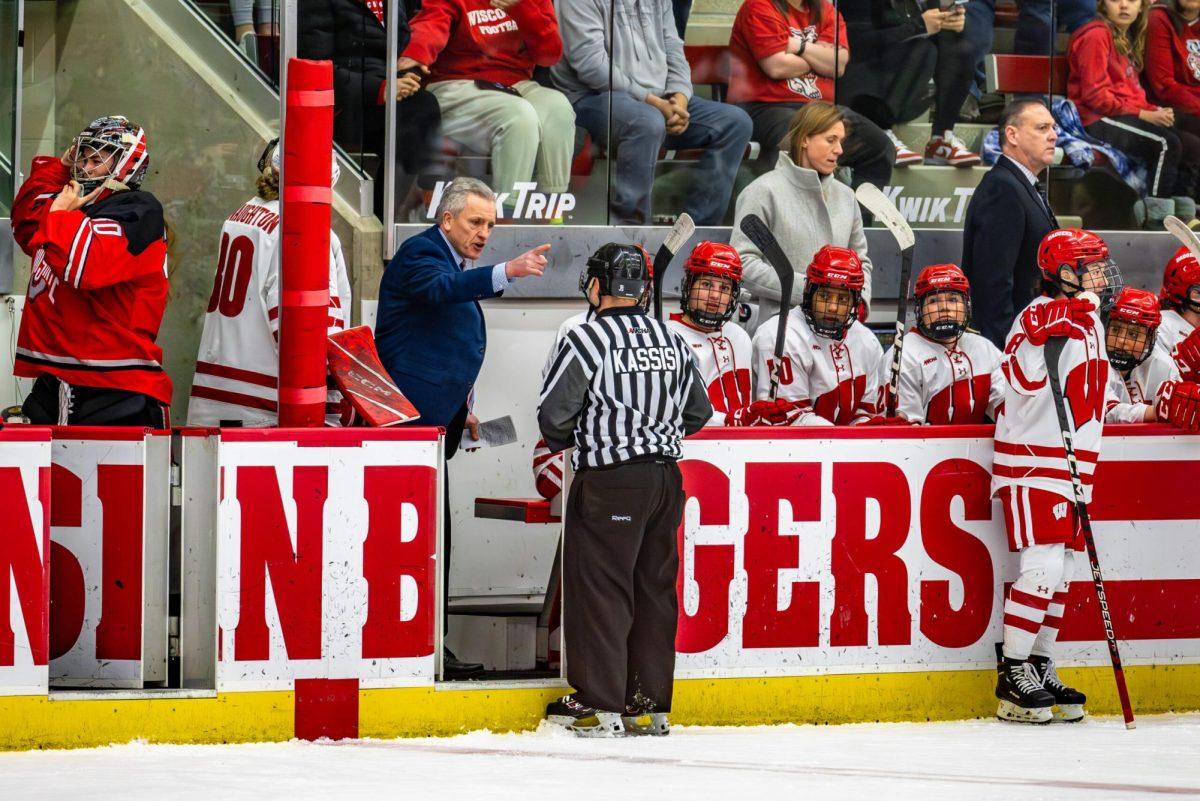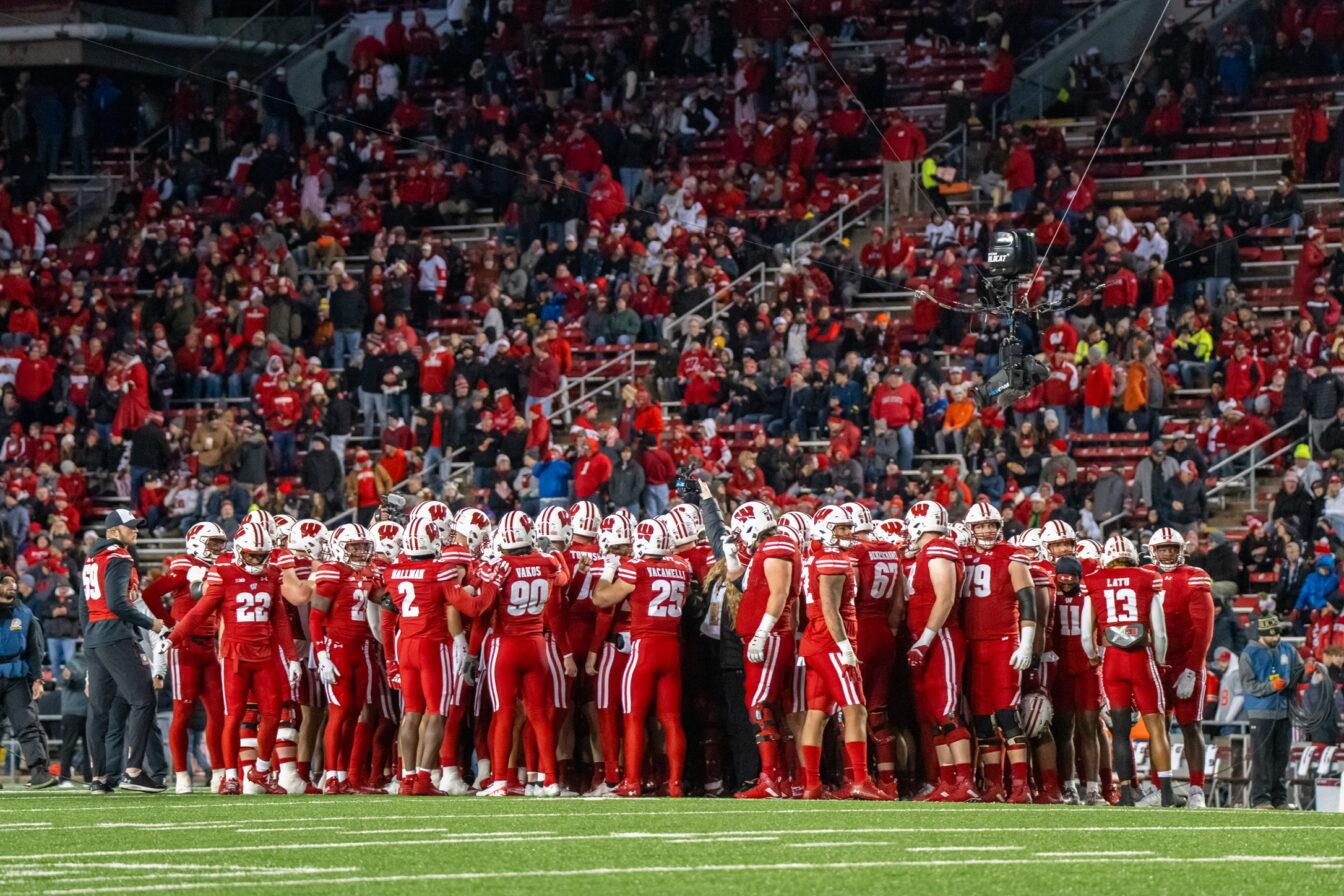The Wisconsin Badgers will take the field at Camp Randall Stadium Saturday to match up with the Minnesota Golden Gophers in college football's longest rivalry — 115 games and counting. Accompanying the team on the sideline this year will be Paul Bunyan's Axe.
Most UW students probably remember Jonathan Casillas' punt block and Ben Strickland's recovery in the end zone to not only snatch victory from the Gophers last year at the Metrodome, but to maintain possession of Paul Bunyan's Axe, which the Badgers had claimed the year before. Saturday, the Badgers will look to begin their third year in possession of the trophy.
The Axe is the trophy used to symbolically capture the essence of the annual struggles between the Badgers and Golden Gophers, and this contest is one of 16 trophy games involving Big Ten Teams.
Of the 16 traveling trophy games, 12 feature rivalries between two Big Ten schools; both totals far and away surpass any other conference in the nation. The Southeastern Conference has eight rivalry games that present trophies to the winner and the Big 12 has six.
According to Scott Chipman, Big Ten Conference director of communications, the first season of Big Ten football was in 1896, which has given schools an awful long time to heat up their competitive juices.
"Rivalries tend to be formed over time," Chipman said. "The fact that the Big Ten has been playing football for over a century means that border battles and other rivalries have had a lot of time to not only develop, but become embedded in the cultures of some universities."
Kyle Coughlin, the director of communications for the athletic department at Minnesota, said it's impossible for universities not to develop heated rivalries with schools they play on a consistent basis, and the trophies are simply added to give the games some more emphasis.
Incidentally, the Gophers are involved in a quarter of the Big Ten's trophy games.
Now that Big Ten football is in full swing, it seems like U of M is always playing in some kind of rivalry game. It seems like they're always playing for a trophy. Well, that's not far from true, as up to half their conference games in any given season could involve a trophy. Along with UW, the Gophers' other trophy opponents are the University of Iowa, the University of Michigan and Penn State.
Coughlin defended the number of trophies U of M can play for, saying it's about tradition.
"When you're a charter member of the Big Ten Conference, there's a lot of history there and a lot of football," Coughlin said. "For example, Minnesota and Wisconsin is the longest rivalry in college football, they're going to be playing their 116th game this Saturday. Trophies merely serve to highlight the fact that it is a big rivalry."
Paul Bunyan's Axe fashions the contrasting colors of the rival universities, and has been presented annually to the victor in the rivalry since 1948. Interestingly, according to releases from both university athletic departments, before the Axe became the trophy, bacon was originally awarded to the victor.
In 1930, a doctor from Minneapolis created the Slab of Bacon to match the Little Brown Jug, which goes to the winner of the Michigan-Minnesota game. The idea behind the slab was that the Wisconsin-Minnesota winner would "bring home the bacon." According to Coughlin, though, the bacon mysteriously went missing in the early '40s, and the Axe replaced it a few years later.
The Little Brown Jug, currently in Michigan's possession, dates back to 1903. Coughlin said the jug trophy originated as a spat between Michigan's and Minnesota's athletic departments.
"The Little Brown Jug tradition began when Michigan's coach, Fielding Yost, left his water jug on the field after a game in 1903," he said. "Yost sent a letter to Minnesota, asking for the jug back, and L.J. Cooke, head of the athletics department, wrote a letter challenging Yost to win it back."
Another personal-rivalry trophy for U of M is the Floyd of Rosedale, which resulted from a quarrel over crowd control between Minnesota and Iowa's respective governors. The governors bet each state's prize pigs before the 1935 showdown.
"The great thing about the Floyd of Rosedale is that it was originally a real pig," Coughlin said. "But because the pig died about a year later, they decided to make a bronze trophy to replace the real pig."
U of M's other trophy game, which they lost in a heartbreaker last weekend to PSU, does not find its origins in some kind of personal rivalry or even a border battle. This Governor's Victory Bell was created on Sept. 4, 1993, simply to commemorate the Nittany Lions' first Big Ten Conference game.
While a trophy started in 1993 would be considered recent by a conference rivalry's standard, the Victory Bell does not hold the distinction of the Big Ten's baby trophy. That distinction belongs to the Heartland Trophy, which was created in 2004.
The 2-year-old trophy, according to Iowa athletic communications director Phil Haddy, came into existence because UW athletic director Barry Alvarez and U of I athletic director Bob Bowlsby just decided there needed to be a trophy for the annual contest.
"The two athletic directors just got together and came to the decision that there should be a trophy to go along with the game," Haddy said. "The rivalry has been competitive, and it happens every year, so why not have a trophy representing the rivalry?"
Though the majority of the Big Ten trophy games are between conference rivals, four of the inter-conference trophies qualify to be eligible to be trophy rivalries due to the fact that they are border battles and intrastate rivalries.
The intrastate rivalry trophy is the Cyhawk Trophy, created in 1977, and is awarded to the victor in the contest between the Iowa Hawkeyes and the Iowa State Cyclones. Haddy said the rivalry between Iowa's two schools became so intense, that the athletic directors of the respective universities agreed to create a trophy to represent the spirit of the rivalry.
Notre Dame and Purdue also compete in an intrastate (Indiana) rivalry for the Shillelagh Trophy. This trophy is a woman who carries a football with the symbol of the victor engraved on it, along with the score of the game. ND's football communications director Brian Hardin explained the origin of the trophy.
"A fisherman from Indiana who always followed the teams decided to carve the Shillelagh Trophy in 1957," Hardin said. "He wanted a platform to display the results of the games each year, so he decided to make the trophy."
The Fighting Irish are involved in one other Big Ten trophy game. ND snagged the Megaphone from Michigan State this season in a mind-numbing collapse for the Spartans. This border battle trophy was created in 1948 at a "friendly foe" party.
According to Hardin, Irish and Spartan alumni typically get together before games and boast of their schools' greatness. During one of these parties in 1947, an MSU alumnus challenged an ND alumnus and the trophy, which was a true cheerleading megaphone with the colors of both universities, was created. Hardin said the megaphone represents the banter going back and forth between schools.
Of lesser note, since both Indiana University and the University of Kentucky haven't had a competitive football team in the longest of times, the Wildcats-Hoosiers border battle presents the winner with the Bourbon Barrel.














